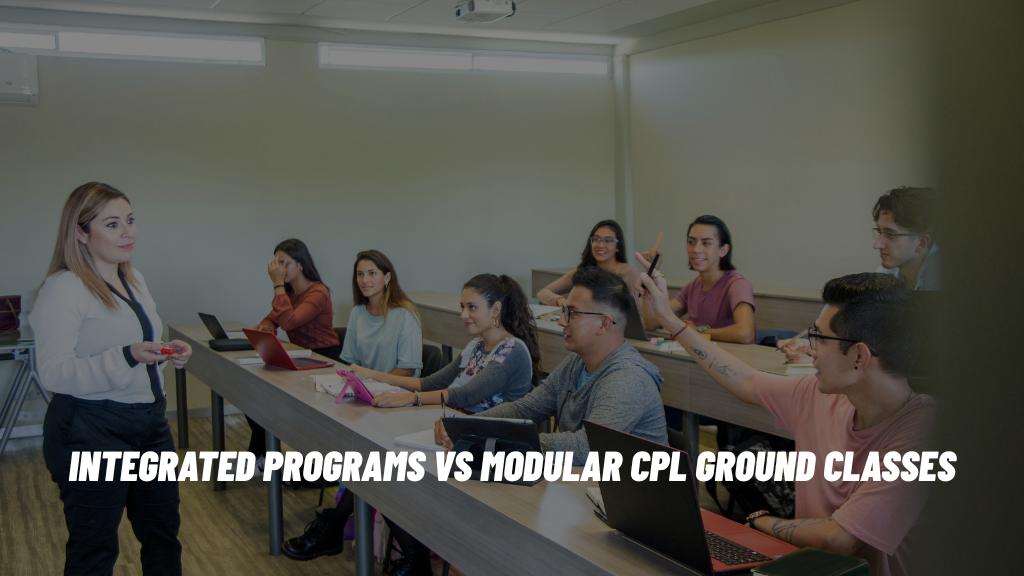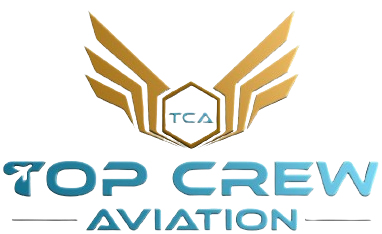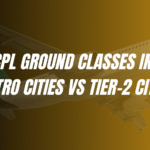
Becoming a commercial pilot is one of the most exciting and rewarding careers—but it’s also one of the most structured professions in the world. For aspiring aviators, one of the first big decisions is choosing between Integrated Programs vs Modular CPL Ground Classes.
This single choice determines how you’ll study, how much you’ll spend, how fast you’ll qualify, and even which airlines might hire you first. In this in-depth guide, we’ll explore what both paths mean, how they differ, and why institutions like Top Crew Aviation are leading the way in providing the best CPL ground training for future pilots.
Understanding Integrated Programs
Integrated programs are a full-time, continuous training pathway designed to take a student from zero flying experience to a fully qualified commercial pilot within a single, structured program.
Everything—ground school, flight training, simulator sessions, and exams—is integrated under one training organization. Students train in a continuous flow, typically completing the course in 14–24 months.
Features of Integrated Pilot Training:
- A single ATO (Approved Training Organisation) manages the entire program.
- Fixed timelines and class schedules.
- Ground theory and flight training progress together.
- Ideal for students who want an airline-style, fast-track program.
Integrated programs are known for producing highly disciplined pilots ready for airline environments because of their structure and intensity.
Understanding Modular CPL Ground Classes
In contrast, Modular CPL Ground Classes offer flexibility. The term “modular” means that your training is divided into separate phases or modules—each can be completed independently.
You can take your Private Pilot License (PPL) first, then move on to CPL Ground Classes, Instrument Rating (IR), and finally your Multi-Crew Coordination (MCC) training.
Features of Modular CPL Ground Classes:
- Study each module at your own pace.
- Pay as you go—ideal for managing financial flow.
- Flexibility to train with different flight schools or instructors.
- You can work or study in parallel while completing your CPL theory.
In modular training, you control your timeline. Many students choose this route to balance commitments while still progressing toward their commercial pilot license.
Integrated Programs vs Modular CPL Ground Classes: Key Differences
When comparing Integrated Programs vs Modular CPL Ground Classes, it’s essential to look beyond the surface. Both lead to the same qualification—a Commercial Pilot License (CPL)—but they differ in how you get there.
| Aspect | Integrated Program | Modular CPL Ground Classes |
| Structure | One continuous, full-time course | Divided into independent modules |
| Duration | 14–24 months (fast-track) | 2–5 years (flexible) |
| Learning Pace | Intensive and fixed schedule | Self-paced and adjustable |
| Cost | Higher upfront investment | Pay per module, flexible payments |
| Training Environment | Airline-style structure | Personalized and customizable |
| Eligibility for Cadet Programs | Often preferred by airlines | Increasingly accepted with strong performance |
| Risk Factor | High financial commitment | Lower financial and personal risk |
In simple terms:
Integrated training is faster and more structured, while modular training is flexible and financially manageable.
How Ground Classes Differ in Each Path
One major difference between Integrated Programs vs Modular CPL Ground Classes lies in how ground theory is taught.
In Integrated Programs:
- Ground school runs simultaneously with flight lessons.
- Subjects like Air Navigation, Meteorology, and Air Regulations are taught right before you apply them in flight.
- It keeps knowledge fresh and relevant, but the pace is intense.
In Modular CPL Ground Classes:
- Ground classes are often completed before or between flight phases.
- This allows more time to absorb theory deeply and retake any exams if necessary.
- It’s a great option for students who prefer academic depth or flexible scheduling.
Ground school is the foundation of aviation knowledge. Whether you choose integrated or modular, your ground classes shape your ability to make safe, informed decisions in the cockpit.
Read Also – Latest DGCA Updates for CPL Ground Classes – 2025 Edition
Financial Comparison: Which One Is More Affordable?
One of the biggest factors when choosing between Integrated Programs vs Modular CPL Ground Classes is cost.
Integrated programs usually require a large lump sum payment, covering aircraft rental, ground classes, instructor time, and exams. While it’s all-inclusive, it’s a heavy financial commitment.
Modular training, on the other hand, allows students to “pay as they progress.” You can finish one module, save up, and then start the next. This flexibility makes pilot training more accessible for students from varied financial backgrounds.
However, modular students might spend slightly more overall due to travel, different schools, and possible delays between modules.
Career Prospects: Which Path Do Airlines Prefer?
Historically, many airlines favored graduates of integrated programs because they train in a consistent, full-time environment—mirroring airline operations. But times are changing.
Modern airlines now prioritize skill, discipline, and flight hours over the training structure. Many top pilots today started with modular programs and worked their way up through experience and quality flight schools.
The key is not just how you trained, but where and how well you trained.
Top Crew Aviation: Leading the Future of CPL Ground Classes
When comparing Integrated Programs vs Modular CPL Ground Classes, one name consistently stands out in India—Top Crew Aviation.
Why Top Crew Aviation?
- DGCA-Approved Curriculum: Ensures students meet all Indian aviation regulatory standards.
- Experienced Instructors: Learn from pilots and ground instructors with thousands of flight hours.
- Modern Learning Environment: Smart classrooms, mock tests, and real-world scenario-based teaching.
- Flexible Timing: Perfect for modular students balancing work or college.
- Proven Success Rate: High pass percentage in DGCA CPL theory exams.
Top Crew Aviation focuses on building conceptual clarity and practical understanding—the two pillars of exceptional pilots. Whether you aim for an integrated or modular path, their ground classes prepare you for every DGCA examination and real-world cockpit challenge.
Choosing the Right Path for You
To decide between Integrated Programs vs Modular CPL Ground Classes, consider these questions:
- How soon do you want to become a pilot?
- If speed is critical, go integrated.
- If flexibility matters, modular is better.
- How much financial flexibility do you have?
- Integrated needs upfront investment.
- Modular spreads costs over time.
- What is your learning style?
- Prefer structured classroom learning? Integrated suits you.
- Learn better at your own pace? Modular is ideal.
- Do you plan to apply for airline cadet programs?
- Integrated paths often align with airline-specific training standards.
No matter which you choose, your ground school performance will determine your success. Strong theoretical understanding builds confidence, precision, and professionalism—all qualities airlines seek.
Conclusion:
The debate of Integrated Programs vs Modular CPL Ground Classes isn’t about which one is “better.” It’s about which one fits you.
- Choose Integrated if you want a structured, immersive, and faster journey.
- Choose Modular if you value flexibility, cost control, and independent learning.
At the end of the day, both routes lead to the same destination—a Commercial Pilot License and a career flying high above the clouds.
With the right foundation, dedication, and training from a reputed institute like Top Crew Aviation, your aviation dreams can truly take flight.
Frequently Asked Questions
What is the main difference between Integrated Programs and Modular CPL Ground Classes?
Integrated programs are full-time, continuous pilot training courses, while modular CPL ground classes allow students to complete each module at their own pace.
Which option is faster—Integrated or Modular CPL Ground Classes?
Integrated programs are usually faster, taking 14–24 months to complete, whereas modular CPL training may take 2–5 years depending on flexibility.
Are Modular CPL Ground Classes accepted by airlines?
Yes. Most airlines today accept modular-trained pilots, provided they meet the required CPL, IR, and MCC standards with solid performance.
Which training path is more cost-effective?
Modular CPL ground classes are generally more affordable upfront since students pay per module, offering better financial flexibility than integrated programs.
Can I switch from Modular to Integrated pilot training?
In some cases, yes. Certain flight schools allow students to transition or combine modules, creating a semi-integrated or hybrid training pathway.
Why choose Top Crew Aviation for CPL Ground Classes?
Top Crew Aviation offers DGCA-approved curriculum, expert instructors, flexible schedules, and high success rates in CPL theory exams—ideal for both integrated and modular students.



